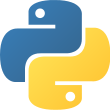Gain hands-on experience of Python programming with industry-standard machine learning techniques using pandas, scikit-learn, and XGBoost
Key Features
- Think critically about data and use it to form and test a hypothesis
- Choose an appropriate machine learning model and train it on your data
- Communicate data-driven insights with confidence and clarity
Book Description
If data is the new oil, then machine learning is the drill. As companies gain access to ever-increasing quantities of raw data, the ability to deliver state-of-the-art predictive models that support business decision-making becomes more and more valuable.
In this book, you’ll work on an end-to-end project based around a realistic data set and split up into bite-sized practical exercises. This creates a case-study approach that simulates the working conditions you’ll experience in real-world data science projects.
You’ll learn how to use key Python packages, including pandas, Matplotlib, and scikit-learn, and master the process of data exploration and data processing, before moving on to fitting, evaluating, and tuning algorithms such as regularized logistic regression and random forest.
Now in its second edition, this book will take you through the end-to-end process of exploring data and delivering machine learning models. Updated for 2021, this edition includes brand new content on XGBoost, SHAP values, algorithmic fairness, and the ethical concerns of deploying a model in the real world.
By the end of this data science book, you’ll have the skills, understanding, and confidence to build your own machine learning models and gain insights from real data.
What you will learn
- Load, explore, and process data using the pandas Python package
- Use Matplotlib to create compelling data visualizations
- Implement predictive machine learning models with scikit-learn
- Use lasso and ridge regression to reduce model overfitting
- Evaluate random forest and logistic regression model performance
- Deliver business insights by presenting clear, convincing conclusions
Who this book is for
Data Science Projects with Python – Second Edition is for anyone who wants to get started with data science and machine learning. If you’re keen to advance your career by using data analysis and predictive modeling to generate business insights, then this book is the perfect place to begin. To quickly grasp the concepts covered, it is recommended that you have basic experience of programming with Python or another similar language, and a general interest in statistics.
Table of Contents
- Data Exploration and Cleaning
- Introduction to Scikit-Learn and Model Evaluation
- Details of Logistic Regression and Feature Exploration
- The Bias-Variance Trade-off
- Decision Trees and Random Forests
- Gradient Boosting, XGBoost, and SHAP (SHapley Additive exPlanations) Values
- Test Set Analysis, Financial Insights, and Delivery to the Client
 Language
Language
 Reading time
Reading time
 What you will learn
What you will learn
 Author
Author
 Published
Published
 Packages you will be introduced to
Packages you will be introduced to
